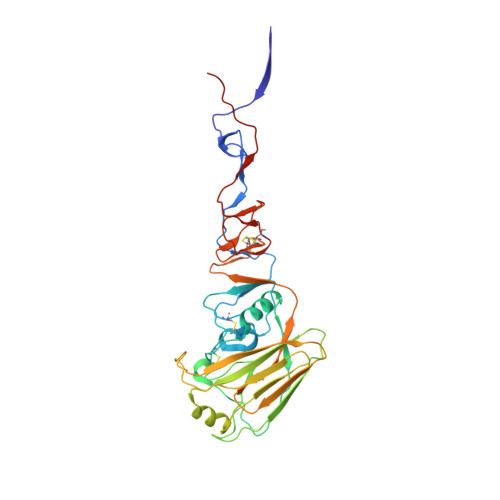Preferential recognition of avian-like receptors in human influenza A H7N9 viruses.
Xu, R., de Vries, R.P., Zhu, X., Nycholat, C.M., McBride, R., Yu, W., Paulson, J.C., Wilson, I.A.(2013) Science 342: 1230-1235
- PubMed: 24311689
- DOI: https://doi.org/10.1126/science.1243761
- Primary Citation of Related Structures:
4N5J, 4N5K, 4N60, 4N61, 4N62, 4N63, 4N64 - PubMed Abstract:
The 2013 outbreak of avian-origin H7N9 influenza in eastern China has raised concerns about its ability to transmit in the human population. The hemagglutinin glycoprotein of most human H7N9 viruses carries Leu(226), a residue linked to adaptation of H2N2 and H3N2 pandemic viruses to human receptors. However, glycan array analysis of the H7 hemagglutinin reveals negligible binding to humanlike α2-6-linked receptors and strong preference for a subset of avian-like α2-3-linked glycans recognized by all avian H7 viruses. Crystal structures of H7N9 hemagglutinin and six hemagglutinin-glycan complexes have elucidated the structural basis for preferential recognition of avian-like receptors. These findings suggest that the current human H7N9 viruses are poorly adapted for efficient human-to-human transmission.
Organizational Affiliation:
Department of Integrative Structural and Computational Biology, The Scripps Research Institute, 10550 North Torrey Pines Road, La Jolla, CA 92037, USA.



















